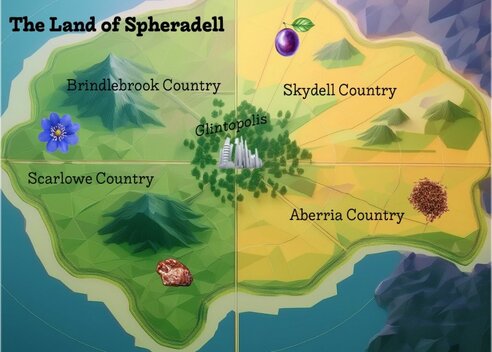Students will simulate interdependence by creating a special baked product important to the people of Spheradell. In the second round of the simulation, each of Spheradell’s 5 areas will begin to produce 2 of the 5 necessary products. Each area will exchange some of the resources for other needed resources, but they will each retain their original advantage in their native resources. Students will experience how comparative advantage leads to international trade.
Please note all student handouts are available for your use in the PDF and Google Document download options.
Objectives
- Define comparative advantage and interdependence
- Explain how comparative advantage leads to international trade
- Explain how interdependence creates efficiencies
Vocabulary
- Opportunity cost
- Production possibilities
- Comparative advantage
- Interdependence
Materials
- Warm‐up worksheet
- Colored and/or labeled cards representing resources from each area of Spheradell
- Blue skybloom flakes (at least 40 blue cards
- Red wheat (At least 40 red cards
- Purple elderbloom fruit (at least 40 purple cards)
- Yellow copper cups (at least 40 yellow cards)
- Green ovens (at least 40 green cards)
- Optional table tents or colored tablecloths
- Optional baker’s hat
- Optional candy, mini muffins, or mini cupcakes to represent Sphere‐Sweet Treats (at least 40)
- Optional sandwich bags
- Letters from Strawkin the Elf (green paper), Vaelor the Griffin (purple paper), Gildron the Knight (yellow paper), Liora the Fairy Queen (red paper), and the mayor of Brindlebrook Country (blue paper), including preround questions
- Debrief questions
- Exit ticket

